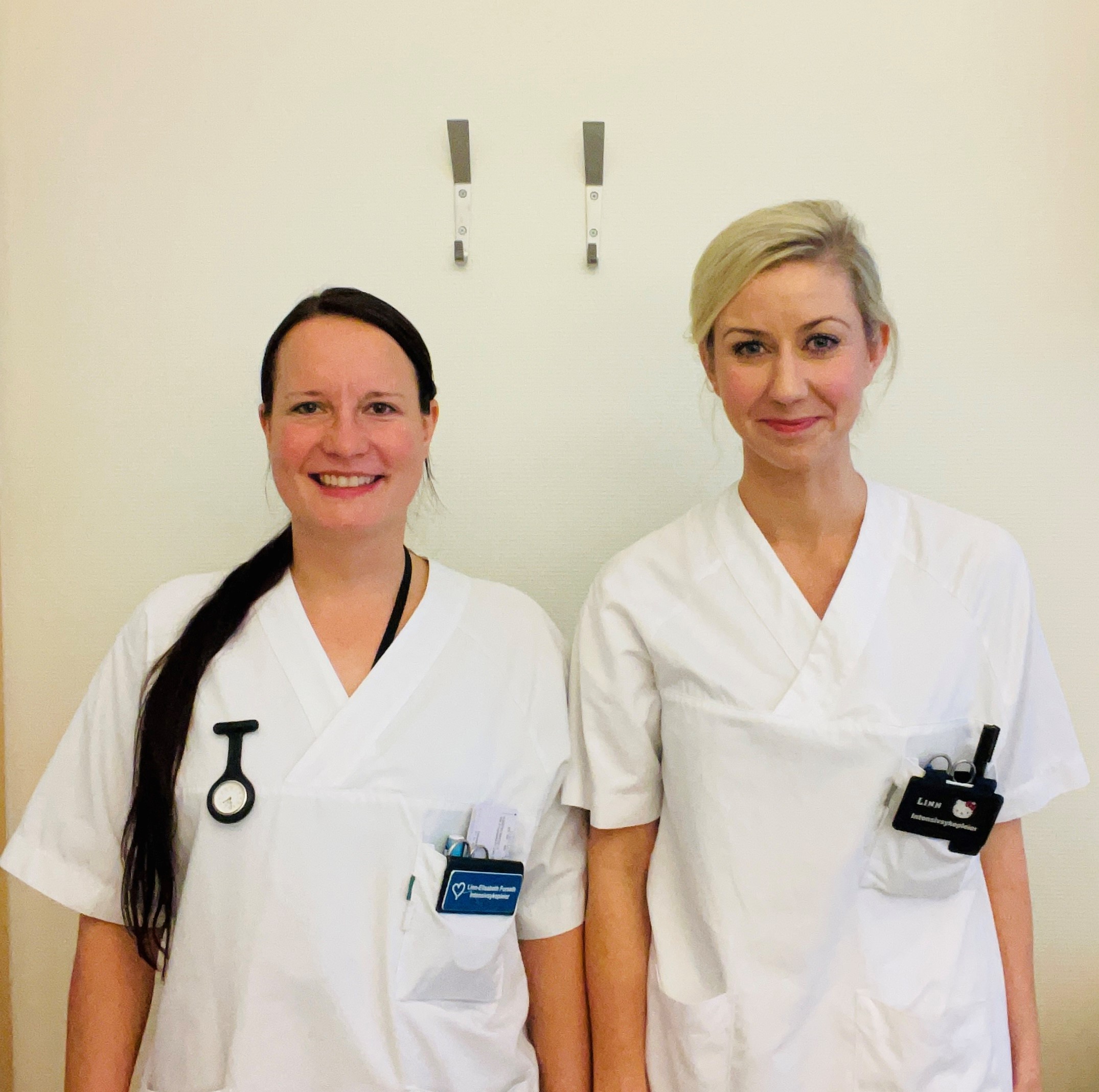Linn Tjemsland and Linn Elisabeth Furseth are both intensive care nurses who work in the cardiac intermediate unit at Stavanger University Hospital. In 2021 they took the opportunity to expand their nursing experience by being involved in the conduct of a research project.

Linn Tjemsland and Linn Elisabeth Furseth are 2 of the 6 nurse navigators who work on the research project eHealth@Hospital-2-Home.
They were encouraged by Professor Ingvild Morken to apply for this role. She supervised their master thesis: "Patients' experience of received information about illness and treatment during hospitalization with ST-elevation myocardial infarction". Prof Morken was also aware of their clinical expertise in cardiology and with heart failure patients.
The role of the nurse navigator was developed for this research project. For nurse navigators, involved in the heart failure arm of the study at Stavanger University Hospital, the role responsibilities include both research delivery and intervention delivery. First, they regularly screen people admitted with heart failure to see if they meet the inclusion criteria. They then introduce the research project to patients and give them time to consider if they wish to participate. This is the research delivery portion of their role.
For participants who are randomised to receive the intervention, Linn and Linn then deliver and support the remote patient monitoring.
For the nurse navigators this means activities such as:
- Teach participants the use of the equipment provided as part of the intervention (iPad/app, blood pressure monitor, and body weight scales)
- Regular electronic, telephone, or video chat follow ups
- Assess and respond to the data securely received by the digital application
- Respond to participant messages
- Provide personalised health information, education, and treatment guidance
- Support the transition of participants after the period of the intervention is completed (6 weeks)
Having worked on the project from its onset, the feasibility study, to now the randomised control trial, Linn and Linn are now sharing their experiences in this new role within the research project at nursing meetings and at research conferences.
Their experience in this role has showed them the importance of providing personalised support to people with heart failure between hospitalisation and their next planned follow-up with a healthcare provider. This period can be long (around six weeks or longer) and is recognised as a vulnerable time for people that can result in rapid readmissions. While generic guidance is available for nurses to provide to people with heart failure around key self-care activities (e.g., nutrition, medications, mental health, physical activity, sleep, setting up routine follow-ups, etc), they now believe that the personalisation of that information is the key to help people with heart failure be successful with their self-care. However, while they are still in hospital this can be challenging.
Fulfilling the supportive needs of people with heart failure before they are discharged from hospital is tricky as they (the patient) may not yet know what they do not know.
They have also observed that some of the participants in the study have personally benefited from the increased monitoring provided through the intervention. In their recent presentation at Helsetjenesteforskningskonferansen 2023 they shared how they in cooperation with participants GP’s and cardiologists observed changes in patient’s symptoms which led to the adjustment of medications, which in their clinical opinion may have prevented a readmission to the hospital.
Linn and Linn also highlighted how the presence of the intervention and the clinical data available to them because of the intervention in the research project, may help inform clinical consultations. Participants reported how they shared their data with a GP during a consultation, which may provide a better foundation for that GP’s decision making around their treatments.
They also recognise that experiences like the above together the existence of their role as nurse navigators (limited to this research project), may be the beginning of possible changes to healthcare pathways as the world begins to make steps towards more digital health applications. If the research project demonstrates the value of such an eHealth intervention, the implementation of this or other digital health interventions will be important.
We have already observed how patients during their participation in the study, experience a different and more supportive care pathway. Without this research, patients would not have access to nurses like us to support, teach, and guide them around their heart failure.
While these observations are not yet supported by the findings in the research, they echo the experiences of participants from the feasibility study. The research group are still conducting the randomised control trial and you can follow their journey to get more regular updates of their progress on X (formally twitter), LinkedIn, or their study webpage.
Linn and Linn are grateful for this experience. They both feel that not only have they gained new research skills, but that their nursing skills have also grown. They are more confident when advising people with heart failure and have become more aware of the gaps in current nursing practice around patient education. Importantly they have gained experience in this innovative type of nursing care that requires remote evaluation of people with heart failure and tailoring their interaction to match the digitally reported data. Like the research team they are very excited about seeing what the results of this study will tell healthcare providers and policy makers.